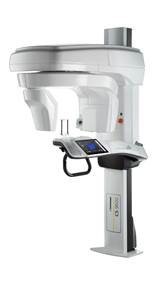
When should you stick with a 2D pan or make the switch to a 3D pan at a dental practice?
Both 2D and 3D panoramic images are useful when diagnosing and further treating dental patients. However, the two technologies cannot be used interchangeably, and there are situations where each would be a better fit. To make sure your patients receive the best treatment and care possible, it’s important to determine the different times each of these panoramic imaging technologies should be utilized.
What is 2D imaging?
2D panoramic imaging is most simply explained as a two-dimensional view of the three-dimensional oral cavity space. 2D pans use fan-like imaging to capture views of patients’ mouths and are most useful in common, simple procedures or diagnoses.
When are 2D pans most beneficial?
- Diagnosing Tooth Decay. Since 2D images primarily highlight the teeth, it’s easy to see when something is amiss. In a situation where a patient is experiencing tooth decay, the use of 2D imaging can help identify the issue quickly.
- Diagnosing Bone Loss. For similar reasons, bone loss in and around the oral cavity can also be examined and repaired with the help of a 2D panoramic image.
- Routine Check-ups. 2D imaging is crucial to help the everyday flow in an office. Keeping up to date on patients’ records is simple with 2D imaging. With reduced amounts of radiation exposure, regular updates of patients’ oral cavities serve as references when identifying any implications they may be facing.

3D pans in the spotlight
3D pans use Cone Beam Computed Technology to produce three-dimensional images that offer height, width and depth. Useful in more intricate procedures, they can also help diagnose seemingly unsolvable issues.
CBCT offers insight as to the location of nerves and blood vessels to ensure a more accurate depiction of the patient’s oral anatomy. 3D pans are often used for more serious procedures or diagnoses.
When are 3D pans most beneficial?
- Placing Dental Implants. Thanks to a seemingly infinite amount of information on a patient’s oral cavity the 3D pan offers, a doctor can be completely certain when deciding where to place an implant.
- Identifying Bone Defects. CBCT offers a higher percent of sensitivity when detecting artificial bone. It can also aid in identifying bone destruction from a tooth infection.
- Extraction of Wisdom Teeth. For a complicated procedure like extracting implanted teeth, having a full array of knowledge is vital. With 3D pans, doctors can view everything from the nerves in a patient’s oral cavity to sinuses. Having this knowledge ensures a smooth and painless procedure.

Ready to take the next step?
Benco Dental offers cone beam imaging solutions that for any panoramic X-ray need.
- Benco Dental can open doors to industry leading manufacturers like Carestream Dental, Vatech and Kavo.
- The result: unprecedented treatment planning and patient communication capabilities, along with world-class service and support.
- Contact your Friendly Benco Rep today at 1.800.GOBENCO


